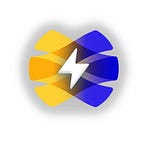IOEN: Changing the Landscape with Holochain Technology
IOEN Tech
A key differentiator with IOEN is the use of an agent-based Holochain architecture in its layer 2. Here’s why.
Holochain is not a blockchain.
Holochain is not a blockchain, but it still has encrypted, hashed, linked sets of immutable data — just like blockchains — but in terms of the core features that we’ve come to know about blockchains, that’s where the similarity ends.
Holochain has often been referred to as a “post-blockchain” technology, but many do not know that its origin predates the Bitcoin white paper, with the principles and components first seen in earlier applications such as BitTorrent. A number of Holochain’s features will require blockchain enthusiasts to “unlearn” a few things. We touch on some of them here, and we encourage the reader to visit https://holochain.org to learn more. We’re pretty sure that with the unlearning comes a whole host of excited anticipation on what this technology can do for new digital economies.
Holochain is the DNA of every agent
Agent = A device, node, piece of code or other actor that has the ability to perform actions in the network. Holochain agents are autonomous in nature, acting on behalf of a predefined set of rules.
Holochain is an agent-based architecture, a profound concept that we will cover in detail in a future article. It means that each agent can store its own data in a local chain, and decide what is shared and with whom. Sharing occurs on a DHT (distributed hash table), which defines the “players in the game”, where the game is a single application. For example, a chat application allows each node to contain the conversation, but not nodes of users not subscribed to the service. A node can participate in multiple DHTs / applications.
True blockchains are considered to be global. For example, if a plumber in Belgium performs a transaction, their record must also be stored by a baker in South Africa, if they are both running nodes. The result is a slower, cumbersome structure, where, in many cases, a newcomer needs to download gigabytes or even terabytes to their wallet to catch up.
Holochain addresses these key issues through the DHT structure, which enables applications to have adaptable configurations of their records, based on the local situational contexts.
Holochain does not require consensus
This takes some getting used to since blockchain is based on many nodes agreeing on a result, which is deemed to be trustless. Holochain allows an application (or “hApp”) to use consensus if it is appropriate, but it is not required.
Instead, the system is supported by other key features such as verification. Verification is a powerful feature that is used to detect and quickly isolate bad actors. Any change in a hash (in data or code) will fail verification by others, who can issue a “warrant” against the actor. As other nodes agree, they simply stop communicating with the suspected bad actor node. The effect of this is that “the node can play, just not with us”.
In addition to this, the full distributed structure of Holochain means that there are no central honeypots of data for hackers to attack.
Holochain is not mined, so no gas fees
Holochain is a peer-to-peer framework to build distributed apps. It does not have to wait for someone to mine and win the next block.
Instead, each agent creates one as needed, making the system much faster and lower cost than traditional blockchains.
Holochain is green
As you may have guessed from the previous two points, the structure means that there is no proof-of-work mining, and no energy use the size of Ireland to create the next block.
In fact, IOEN is exploring a use case where cryptocurrency miners can be rewarded for making the transition to using clean energy, contributing to the solution of this problem.
Holochain is anti-fragile
It is early days for large scale deployments, although early adopter RedGrid in Australia has conducted performance and scalability tests with the UN Award-Winning Monash University Net-Zero Carbon Emissions Initiative.
As the number of nodes in a DHT increases, performance is unaffected, and the network gets stronger and more resilient as more nodes are added. This creates breakthrough scalability that has not been seen in traditional blockchains.
Holochain and IOEN
In many ways, IOEN is an IoT (Internet of Things) ecosystem, with its protocols running on many small, smart, distributed devices in every home connected with IoT devices to standard energy using appliances: phone chargers, lamps, washing machines. IOEN needs speed. It cannot have the extra cost of gas fees and requires resiliency appropriate to the size of an electricity minigrid.
As a protocol that is connecting agents within local community minigrids, Holochain’s underlying architecture enhances IOEN’s ability to deliver fast, effective distributed technology within these environments.
Community Driven
Above all, Holochain’s technology is built by a growing network of people who care about the world we are leaving to our children. The organisation is a quiet achiever, here for the long term. A grassroots movement from the bottom up.
This aligns perfectly with IOEN’s mission, to change the world for the better with clean, affordable energy. Using this underlying technology, we will accelerate towards zero carbon emissions.
We would love you to join us, please visit https://internetofenergy.network, or and join the conversation at https://t.me/IOEN_global.
For more on Holochain, go to: https://holochain.org/
Join the community on Telegram
Follow us on Social Media for more news! Twitter | Facebook | Website |
